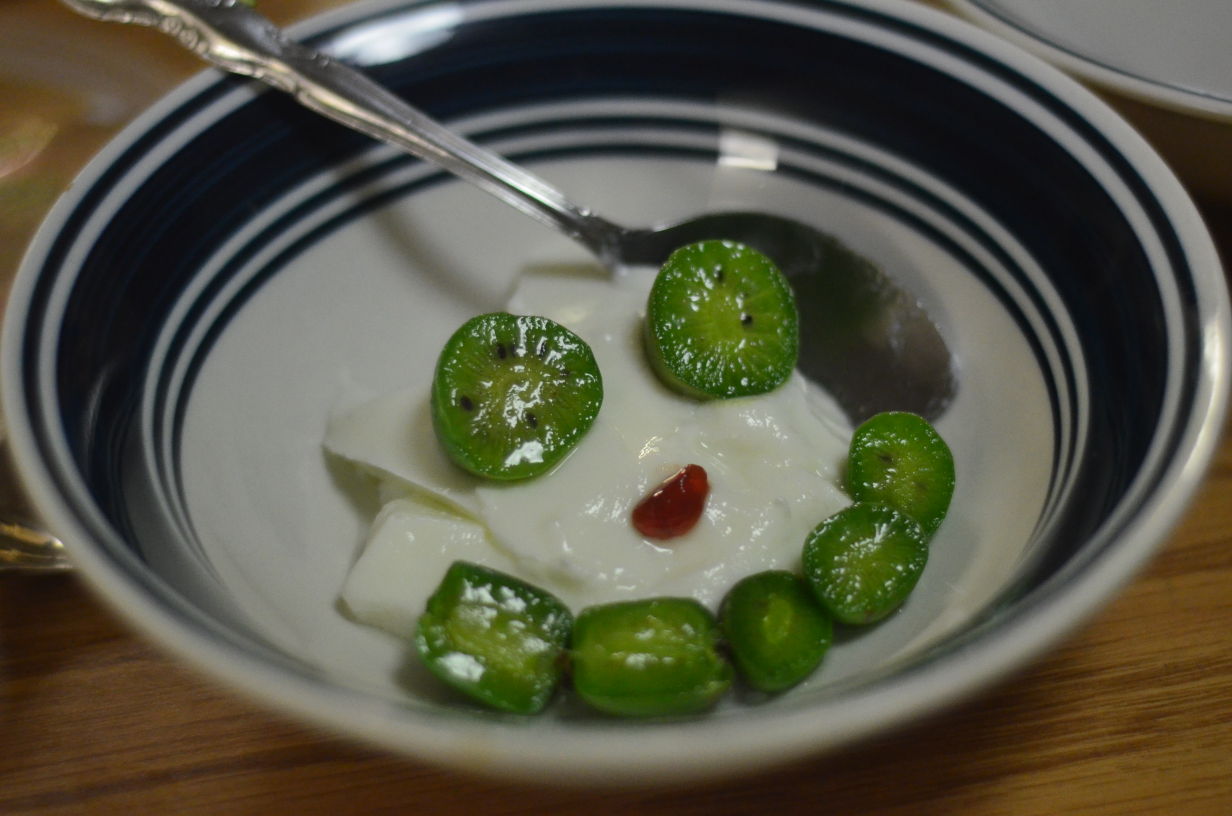
Kiwi berry
My friend and I stumbled — almost literally — upon McCleaf’s Orchard’s kiwi berries when we accidentally showed up to last week’s farmers market an hour before opening. Amidst the unpacked crates and boxes were a few pints of grape-sized green things. Unlabeled. Mysterious. Irresistible.
“Ever seen these before?” I asked my friend, poking one. Though they looked like unripe crabapples, they were surprisingly squishy.
“No,” he said, preoccupied with one of Sweet Teensy’s chocolate chip cookies (they were the only stall open). “I guess this means you want to blog about them.”
I did, but it turned out that kiwi berries confuse even Google. It’s hard to locate any information about them that you couldn’t learn by popping a few in your mouth. All I can tell you is that they’re a hardy vine fruit, they’re reasonably new to the commercial market, and when you try to find recipes online, you’re going to get a lot of suggestions for regular kiwi concoctions.
Fortunately, this isn’t a bad thing because kiwi berries are basically sweeter, cuter versions of full-sized kiwis — they even look the same sliced in half. They also don’t have that nasty welcome-mat fuzz on the outside, which makes them a lot easier to eat. Like actual kiwis, they come from China. Also like actual kiwis, a lot of them are grown in New Zealand.
What I Made:
Kiwi berries work in most situations where you would eat a regular kiwi, so I just chopped them up and ate them with yogurt and honey. Arguably your best option is packing them as a solo snack — they’re all the taste of the usual fruit without the hassle of bringing a spoon or vegetable peeler and getting green fruit guts all over your lunch table.
Other Options:
This New Zealand kiwi berry grower site compiles the most promising suggestions for kiwi berries: frozen yogurt, fruit salad and mixed drinks. If you’re really adventurous, there’s a sweet omelet option as well.



